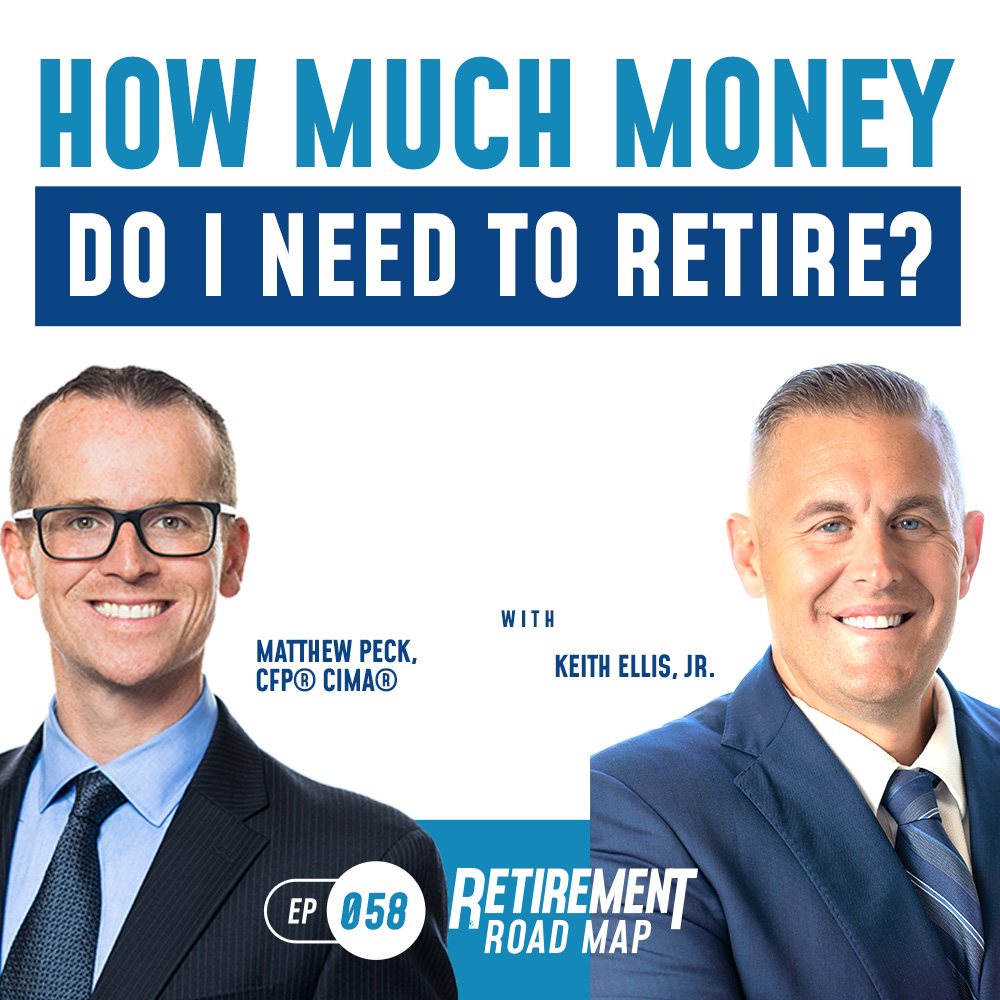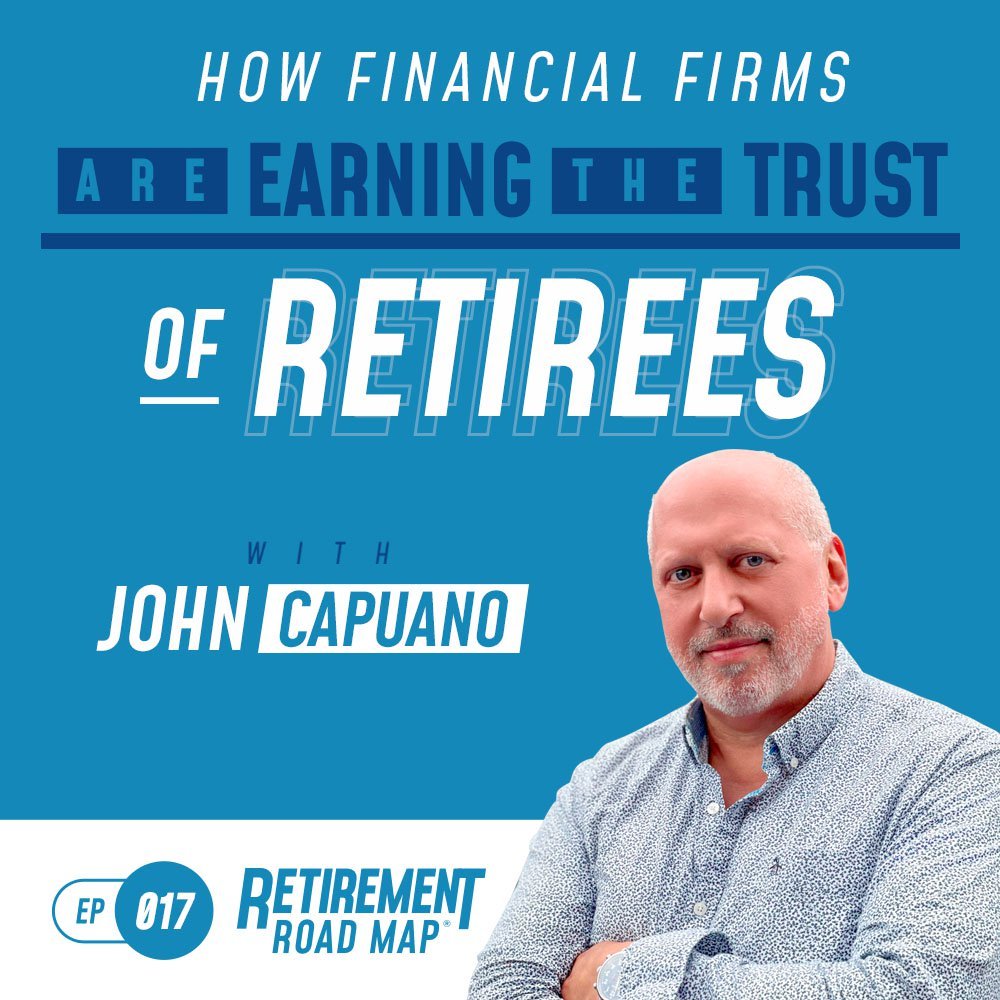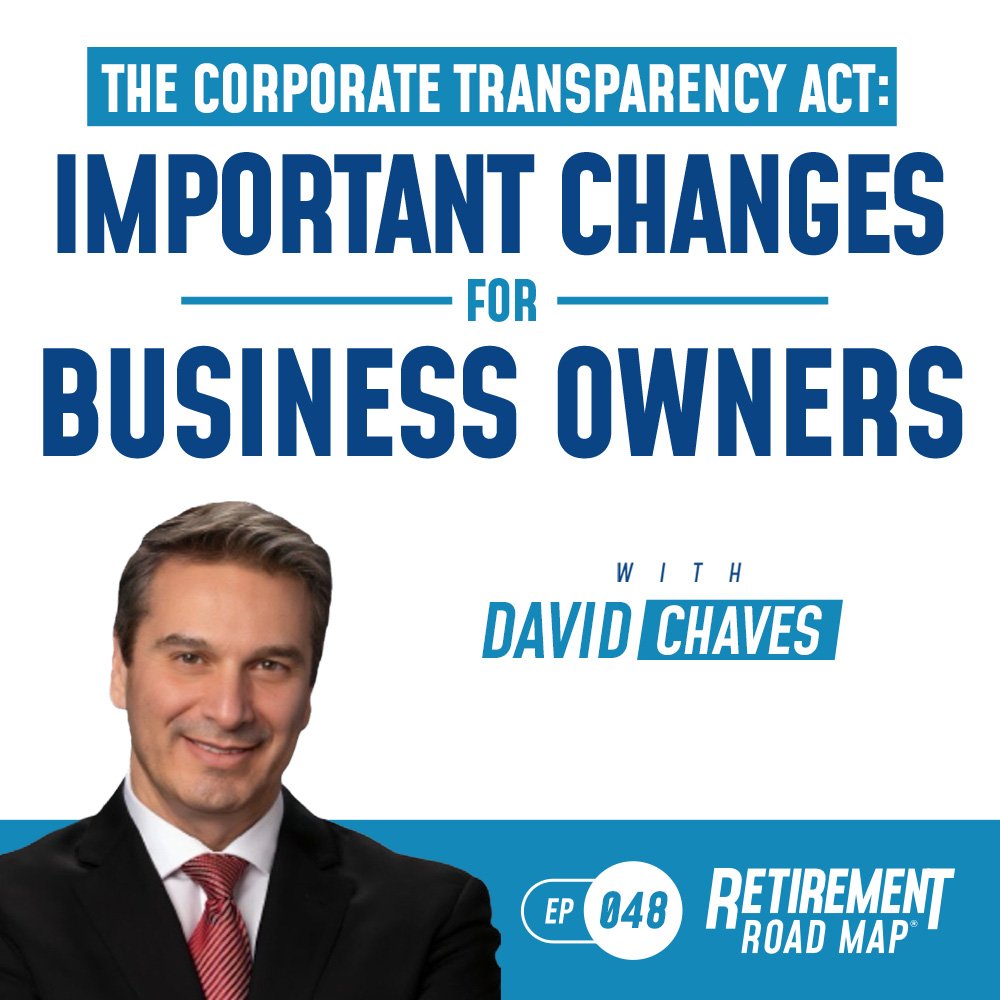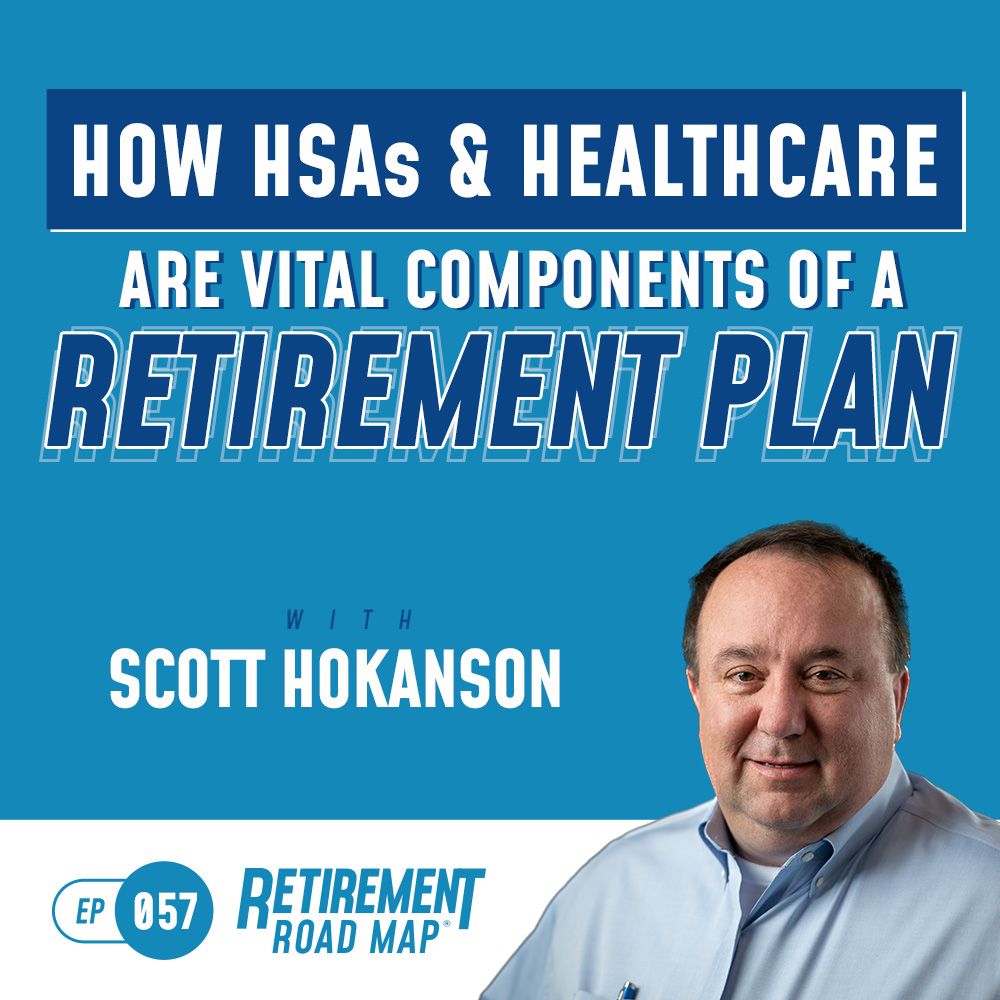Here at SHP, we get so many questions about Social Security: when to claim it, how it works, and what might happen to it in the future, especially with how dysfunctional Congress has become.
As always, we’re excited to welcome Mark Kenney, CFP, CTS, back on the podcast to get his thoughts on where things might be headed and how to plan for it.
In this conversation, we dig into the history of Social Security, the common challenges people face when it comes to taking it, and how Social Security factors into a comprehensive financial plan to help you meet your goals in retirement.
In this podcast discussion, you’ll learn:
- Why Social Security should never be your sole source of income.
- How to maximize your Social Security benefits–and what to consider as you decide when to take Social Security.
- How your Social Security benefit is calculated–and who’s eligible to claim your Social Security after you die.
- What the Windfall Elimination Provision (WEP) penalty is and how it can impact your Social Security.
- Why Social Security must be fixed in the next ten years to ensure benefits for future generations.
Inspiring Quotes
- “Massachusetts does not tax Social Security. So, when you take money from Social Security, you will not pay that 5%, and actually only 85% of it is taxable.” – Mark Kenney
Resources
- Follow Mark Kenney on LinkedIn
[EPISODE]
Matthew Peck: Welcome, everyone, to another edition of SHP Financial’s Retirement Roadmap podcast. I’ll be your host today, Matthew Peck, joined by co-host, Keith Ellis. And today we’re going to be talking about the past, present, and future of Social Security. We get so many questions about when to claim, how it works, what’s going to happen in the future in which is coming faster than I think any one of us would like at times, and some of the threats that are there to Social Security. And when it comes to some of the dysfunction in Washington, D.C., it’s right to get a little depressed at times as to whether or not they can fix it. Here to talk about the Social Security program is our returning guest, Mark Kenney, CFP, CTS, a whole bunch of letters after his name so you know that he’s coming with some great information for all of our listeners. And so, thanks for tuning in, and hopefully enjoy the episode. Before we get into the past, present, and future, how’s everyone doing? Keith, Mark, welcome to the podcast. Welcome back.
Mark Kenney: Well, thanks for having me.
Keith Ellis: Thanks for coming in, Mark.
Mark Kenney: Yeah. No, I had a great weekend. A lot of flag football with the son. Got some games in and the playoffs start next week. So, he’s very excited. And Halloween, obviously.
Keith Ellis: Yeah. Same thing with me. I fly Football Weekend Hour in the championship. So, yeah, rolling.
Matthew Peck: Oh, there it is. Right? Yeah. So, did you guys play flag football growing up?
Keith Ellis: I wasn’t even on now.
Matthew Peck: It wasn’t even a thing, right?
Mark Kenney: No.
Keith Ellis: It’s an Olympic sport now.
Matthew Peck: I’ve heard that. Yeah. So, beginning in 2028 it’s an Olympic sport.
Mark Kenney: And it’s going to be held in L.A. and there’s going to be, I guess, a number of countries that play it. So, it’s obviously taken off across the world.
Matthew Peck: In an effort to that, NFL players might be playing in it, too. I’m not sure if you heard.
Mark Kenney: That would be awesome.
Matthew Peck: Like, I think Tyreek Hill was trying to get the…
Keith Ellis: Yeah, they did it for the Pro Bowl this past year.
Matthew Peck: Did they?
Keith Ellis: Yeah. They’re going to do it again this year. It was fun. It’s fun to watch. It’s a fun sport for the kids to play it, too.
Matthew Peck: Oh, absolutely. And just again, just one of these things that never existed or I’m sure it did exist but, yeah, I didn’t play it at all growing up.
Keith Ellis: Not at all.
Matthew Peck: There were no leagues and now they’re everywhere.
Mark Kenney: Everywhere.
Matthew Peck: Yes, exactly.
Mark Kenney: It’s very popular.
Matthew Peck: To 7 to 9-year-olds.
Keith Ellis: It’s very popular just like Social Security.
Matthew Peck: Yeah, absolutely.
Mark Kenney: Yeah. It’s a very popular topic.
Matthew Peck: Great, great pivot, this guy. That’s what…
Keith Ellis: Transition.
Matthew Peck: Yeah, I love that So, Mark, let’s start with the past of Social Security. How did it originate? What were the spirit and the laws that kind of created it way back when? And so, we’ll start there as to the origination of the program.
Mark Kenney: Yeah. I think it’s important to understand the history of Social Security and what it was designed to do. So, Social Security was put in place in 1935 by FDR. You have to remember what was going on in the world at that time, especially the country, was the Great Depression, right? And so, it was seen as a way to keep the most vulnerable members of society out of poverty. And at that time, it was old age people, so pensioners, survivors, widows, and then people on disability insurance. So, sometimes you’ll see it coded on your pay stub as OASDI, which Is Old Age Survivors Disability Insurance. So, at that time, they passed it in 1935 because of the Depression in 1929, and they started taxing employees’ paychecks so W-2 earnings. And at that time, it was 1% that the employer paid and 1% that the employee paid. And that money was then passed on in monthly paychecks to individuals as a source of income. And very foreshadowing of the Social Security debate that comes up today, the first lady who ever received a paycheck was a lady by the name of Ida May Fuller. Now, she was from Ludlow, Vermont, not too far from here.
Matthew Peck: Okay. Go to England.
Mark Kenney: Yeah. And why I tell this story is because during her years, now, she probably contributed for a couple of years from 1937 onwards. So, she put in, I believe it was like $24 into the system. That’s what she put in. Now, at that time, you could take Social Security at 60 years of age. So, her first monthly paycheck was $22.54. She collected that paycheck for 40 years. She lived to 100 years of age.
Keith Ellis: Wow.
Mark Kenney: And she collected would the equivalent of today is $475,000 in benefits. So, it was very foreshadowing that she put in very, very little time and she collected a lot of money back through the system.
Keith Ellis: She definitely maxed out her benefit.
Mark Kenney: She definitely got the most out of her benefits but, yes, she lived to 100 years of age and collected that monthly paycheck plus cost of living for 40 years.
Matthew Peck: Well, that was one of the things I’ve always heard about Social Security is that back again 1935 when they had selected the age of 65 or different ages to begin benefits, that was the life expectancy. So, the life expectancy was called the mid-sixties. I mean, at that point, obviously, we could talk about the health and the lifestyle and everything that led to an early sort of demise, if you will, at least comparatively speaking now. So, to a certain extent, they almost never expected to pay it out. And then here, their initial recipient.
Mark Kenney: Their first recipient. And that’s why I think it tells a great story about where Social Security is today and the changes that they talk about making because life expectancy has gone up exponentially. And yet you can still take Social Security as early as 62. And so, it’s a great story to tell and how Social Security started. But again, why they put that place, why they put the system in place was to have some sort of income, not your only source of income, but some source of income to keep you out of poverty and protect those most vulnerable members of society.
Matthew Peck: Well, I think that’s a great point to really emphasize that. It was never meant to be your only income source. It was meant to be a complementary income source or more so that if you have literally I said poverty to kind of keep you above the impoverished line, to keep you not on the street, almost like to prevent homelessness to a certain extent. And I think the other thing, and I would share this statistic to talk about it but it’s sometimes very scary when they talk about how many retirees don’t have savings and then they are living off just Social Security. Now, I’m not sure how people ended up in that position exactly and whether there are circumstances and choices or whatever that may be but there’s a high percentage of people or a lot of people out there are living off just Social Security.
Mark Kenney: Yeah. Actually, Forbes, in doing research for this, Forbes estimates that 40% of people on Social Security, that is their only source of income. So, you can see why it’s important to have Social Security to keep those 40% of people with some source of income, which essentially keeps the economy going, right? But how to take Social Security too? Because you want to make sure that you’re maximizing your benefits and getting the most for it. And there are so many complicated rules around Social Security and who’s eligible and, hopefully, we kind of unravel that today. And even the Social Security website will indicate to you that this shouldn’t be your main source of income in retirement. It’s just there is a supplemental source again to protect you.
Keith Ellis: Well, it’s interesting because as we sit with folks on a weekly, on a day-by-day basis, we’re looking at building what we always describe as a holistic retirement plan. We’re looking at investments, we’re looking at taxes, we’re looking at health care. We’re looking how to take health care, looking at how to leave assets for one generation to the next but the big one, and probably the most important one is income because once you retire, you don’t have a paycheck, right? And Social Security kind of provides a floor as a way to get some consistent income, almost like that paycheck that you were previously getting. So, when we look at building an income plan, one of the things we focus on the most and the questions we get asked the most by most folks, I would think, at least I do, is around Social Security maximization. When should I take it? Why should I take it at that time? You know, what are some benefits of delaying it? What are some benefits of taking it early? So, I don’t know if you could speak to that, if you guys deal with that at all, too, but I think it’s a huge part of when you’re looking at a plan, you start with your income and then build from there.
Mark Kenney: Yeah. So, the first question we usually get is when to take Social Security and unfortunately, there’s no right answer, right? But I always say that the wrong answer could possibly leave tens, if not hundreds of thousands of dollars in potential income on the table. So, that’s why when we take a comprehensive approach, we’re asking questions about your health, about how you feel about legacy, about your other income sources, so that we can make the best-educated decision on when you should take Social Security. And what I find is that a lot of people will go into the Social Security Office and remember Social Security, that person doesn’t know your goals, your objectives, your whole financial plan. And they will often tell you, “Oh, just wait until 70 because you get a larger benefit.” And they don’t know that this person plans on retiring at 62. How are they going to fill that void for eight years? Or maybe they’re not in the greatest of health and as we know, Social Security kind of dies with you. So, you got to get a personalized approach to how to take Social Security. You can’t just say, “Everyone should wait until 70 because it’s a bigger number.”
Matthew Peck: Well, sorry. So, let’s unpack that then. So, what are the factors? Let’s sort of take them one by one and what should people consider when deciding when to take Social Security.
Mark Kenney: Yeah. Great question. So, you have to remember, Social Security isn’t this free money that you get. You pay into the system. And you pay a lot of money into the system.
Matthew Peck: You, we, yeah, pretty much everyone listening.
Mark Kenney: Yes. That’s it. And remember, when I said when it first started that you were paying in 1% of your salary. Now, it’s a lot more than that. 6.2% of your salary goes into Social Security and then your employer pays another 6.2. So, those self-employed individuals out there, they know that they pay both sides of Social Security. So, you can see that the funding has gotten a lot more because so many more people are on there. So, factors that you have to weigh when looking at when to take it. Obviously, age is a huge element of when you should take it. You can take Social Security as early as age 62 or you can delay it all the way until 70. And Social Security does incentivize you by giving you a raise every year. And I’m not talking about the cost of living raise. I’m talking you’ll get more of your money depending on when you take it. So, you first want to look at your age and determine when you want to take it.
The second factor is if you’re working. So, everyone here listening to this should know what Social Security deems their full retirement age. And full retirement age, a lot of people think it’s 65 that’s tied to Medicare and it’s not, okay? It’s actually determined by the year you were born. And so, to put it in perspective, anyone born before 1954, it is 66 years of age. And then from 1954 to 1960, you add two months to 66. And then from anyone born 1960 or beyond, it’s 67. And again, that’s what Social Security calls your full retirement age. And basically, what that means is you get 100% of your benefit at that time. Now, again, you can take Social Security earlier than your full retirement age, but you’re limited to how much income you can make. All right. And when we say income, we’re not talking about IRA distributions or rental property. It’s earned wages, W-2 wages, or self-employed wages. And I think next year, the Social Security Office said about 23,000 as the limit that you can make. So, if you’re someone who makes $40,000 a year and you want to take Social Security early, again before full retirement age, you’ll end up giving your benefit back because you’re limited by how much you can earn of that factor. Once you reach full retirement age, I always say to my clients, “You can be Tom Brady. You can make $10 million a year and still collect Social Security. It’s not affected by that.” So, earnings or if you’re working, that is a huge factor.
Health So, your health is a major factor in determining when you’re going to take Social Security because, again, Social Security passes with you unless you have a spouse who can get some sort of residual benefit from you. We’ve done the math, guys, and we know that like the difference between taking at a full retirement age or maybe waiting until age 70 for a higher benefit, usually, the break-even is around 80, 81 years of age. And what that means is, yes, if you can tell me that you plan on your guarantee that you’re going to live to 85, you will technically get more money out of the system by delaying that. But I always think there’s a qualitative element in Social Security. And I say this to clients like, do you value $4,000 a month at age 85 versus $3,000 at 67? Because, obviously, we can do more stuff with that. So, it’s not always just about the numbers and about more money when factoring in how to take Social Security. So, that’s a huge factor that comes into play as well.
So, I think those are the main ones. There’s other ones like, are you married? Because remember, that your spouse is entitled to either his or her benefit or up to half of your benefit when they trigger it. But those are the four key factors that we look at when developing or coming up with when to take it.
Keith Ellis: It’s funny because that qualitative is often overlooked, right? It’s like, “Hey, how do I get the most out of this system?” Because I’m putting in the system for so long, I want to maximize my benefit. It’s like, “You’re right. Like, do you need an extra 4,000 when you’re 80, 85 years old? I mean, maybe. But what does your quality of life look like then?”
Mark Kenney: Exactly.
Keith Ellis: So, now you go to percentages and, in my opinion, obviously, like everyone would agree, the chances of your quality of life being better from 66 to 70 are a lot better than 81 to 85 just like the percentage-wise, right? So, it’s funny because our clients will always come in. They’re like, “Hey, my go-go years, my slow-go, my no-go years,” right? So, a lot of our clients, they understand that they’re going to get more if they delay but they want the benefit in their go-go years because they can use it to travel. They can use it to check off those bucket list-type items.
Matthew Peck: Well, and that’s what I love too because I think Mark, sorry if it was Mark or Keith talking about the comprehensive nature of what we do and the questions that we ask because it’s amazing how the decision on when to take Social Security is a microcosm of all the planning that we do. For example, looking at a client’s health care, their health care situation, how is their overall health, their longevity in their lives. Working. When it comes to income, are we still doing consulting? Do we want to do consulting, part-time work, whatever that may be? Are you married? What’s the legacy aspect? Because the other thing, too, I want to kind of go back to, on all of those specific natures of it, is that it’s so unique because if people do want to retire at 62 or 64 or 66, how stressful is it on their portfolio if they do not have any other income sources coming in? And people talk about what’s called the withdrawal percentage. And so, you don’t want to be withdrawing more than certainly four is the rule of thumb, but you don’t want to be withdrawing 10% of your portfolio to make ends meet because chances are, you’re not going to get 10% in interest to offset that.
Mark Kenney: That’s correct.
Matthew Peck: So, now it’s like because you were saying, Mark, about Social Security is like, “Oh, you just delay until 70. It’s so easy.” Like, well, not necessarily if you are putting this…
Keith Ellis: Depleting.
Matthew Peck: Yeah, if you’re depleting this asset at an early age during those go-go years.
Keith Ellis: And a lot of it is taxable because a lot of people have saved in IRAs, 401(k)s, 403(b)s and they’ll make the mistake of saying, “Okay. Well, I’m going to retire at 62, take Social Security to start drawing or not take Social Security, start drawing down my IRA,” they’re paying more in taxes and there could be some tax planning strategies that could work a lot better. So, I mean, like you said, Matt, there’s so much more that goes into it.
Mark Kenney: And the other thing that I would say on that is when someone says to me, “I’m not going to take Social Security. I’m going to draw off my IRA to fill that void,” I always say, “Your IRA can get passed on. There’s beneficiaries on your IRA.”
Keith Ellis: That’s a great point. Yes.
Mark Kenney: Right? Your wife, your kids, they will get your IRA. They won’t necessarily get your Social Security. And so, it doesn’t usually make sense to me if someone says, “Well, I’ll just take from my IRA instead of taking Social Security.” But moreover, the fact that people don’t realize that I know we live in Taxasachusetts but Massachusetts doesn’t tax Social Security. It’s the one thing they don’t tax.
Matthew Peck: Can you repeat that just for everyone? I mean, honestly, I must admit I was unaware of that.
Mark Kenney: Yes. So, Massachusetts does not tax Social Security. So, when you take money from Social Security, you will not pay that 5%, and actually only 85% of it is taxable.
Matthew Peck: That part I knew. All right. So, 85% of Social Security. So, for all of our listeners, I just want to make sure everyone has that correct. So, just so everyone knows, to build on Keith’s point and Mark’s point, when you do take Social Security on a federal level, only 85% of Social Security is taxable. Again, only 85% compared to, let’s say, an IRA distribution, which is 100% taxable. So, only 85% federal. And then how much for state?
Mark Kenney: You don’t pay anything. There’s no state tax on Social Security as it stands today. But that’s huge. That’s a 5% savings. If you’re getting $40,000 in Social Security, your savings is $2,000 where that might not be applicable when you take money out of an IRA. And again, 85% is taxable at the federal. That’s the most. Okay. It’s based on provisional income. We don’t have enough time to get into there but if you don’t have a lot of other income besides Social Security, you might pay nothing on taxes for Social Security. So, again, brings it back to understanding what a client’s income plan looks like so that we can make an informed decision, see what the taxation of that will be. But yeah, and I encourage everyone, if you look at your Social Security printout, the ones they send every year, you have put tens, hundreds of thousands of dollars into that system, both you and your employer. And again, if you’re self-employed, you’ve put in all of it into it. You don’t get a return on that money to start taking it out.
And I’ve seen some people have put $250,000, $350,000 in the Social Security system over 30, 40 years. And that money just sits there in this fund and it’s just a promise. Until you start receiving that money, there’s no return on your investment. So, that’s why I may encourage people to take it earlier than wait until 70 because of the value, because of the qualitative element of it.
Matthew Peck: So, let me just also kind of go back to just basic facts that people understand. So, let’s walk through spousal benefits, how they work about the half, 50%. Let’s walk through that a little bit. Walk through how. Because the thing that always struck me was there’s difference between spousal benefits and widow’s benefits, which are different. And then last but not least, if you don’t mind, unravel, unpack the WEP or the Windfall Elimination Provision. A lot of questions on that as well that I get from clients.
Mark Kenney: Yeah. So, first, I’ll start with who’s eligible for Social Security. So, you have to have what they call 40 credits in order to be eligible for Social Security. And you can earn up to four credits a year. All right. Now, this used to be called quarters, meaning that you could only earn four quarters a year, and mean you had to work all throughout the year. Now, you can get four credits if you earn enough and I think it’s around $8,000 you have to earn and then you get your four credits. Whether you earn that by January 15th or in March, you earn your four credits. Once you have 40 credits, which is essentially ten years of working, you’re eligible for Social Security. Now, how they calculate how much you’ll get is based on your highest 35 earning years.
Matthew Peck: Thirty-five?
Mark Kenney: Thirty-five. So, what they do is they look at your highest 35 earning years. And again, this is all in the Social Security printout that you get every year and they do adjust it for inflation. So, the money that you were making in 1980 was obviously less of a paycheck, but that does have an inflationary element to it that kind of brings it into today’s dollars. They then average those out and that comes up with the amount that you will get. Now, keep in mind, if you only worked 25 years, those other ten are given zeros and, obviously, brings the waiting down. When you apply for Social Security and you’re married, you’re eligible for either your benefit or half of your spouse’s. So, if we have a scenario where a husband has a benefit of 2,500 and let’s say a wife who took years off to watch the kids, raise the kids, and her benefit is 1,000. Well, technically, she can get up to half of his, all things being equal at full retirement age, and moreover, the higher benefit carries forward. So, if he was to predecease her, essentially, she’ll be getting about $2,500 a month, which is again, another factor we look at is, are you married? Because the higher benefit does carry forward.
Matthew Peck: And so, if you are now full retirement age, now if you go early, there is a penalty.
Mark Kenney: There is. Correct. Yeah. You get a little bit less. It’s roughly about 8% less. By every year, you take it before that full retirement age. That’s why it’s so important to know what your full retirement age is. And again, if your full retirement age is 67, you’re taking at 62, you’re getting quite the haircut, about 40% haircut for that benefit. But again, you’re filling that income gap for five years instead of waiting. You brought up a good point, Matt. So, widowers. Widowers are actually allowed to take Social Security at 60 instead of 62. So, they get it earlier. And this is based on if they were married again at the time of the spouse’s passing, still subject to the earnings test. So, they still can only make a certain amount, but they can collect that benefit off their spouse or their deceased spouse earlier than 62. So, again, it’s understanding the client’s history to make that best decision.
Matthew Peck: And the other thing, sorry to interrupt, Keith, the only thing I was going to add to that, which was also something that always stuck in my mind too good to understand is that for a spousal benefit, let’s say, for example, the younger spouse goes on to their Social Security, even at that haircut, but the other spouse defers up until their full retirement age. Point being, I’m sorry, is the fact that the widow benefits. So, the higher check is not subject to that haircut at death.
Mark Kenney: That’s correct.
Matthew Peck: So, even if let’s say the husband is 68 and he delayed all the way until full retirement age, and so he’s got $3,000 a month coming in but the wife went early. And so, her normally would be $1,000 but she’s only getting 800 or whatever because of the haircut. She would go up to the 3,000. Her penalty goes away at death because she goes from her spousal benefit or whatever her own benefit to the widow benefit, which is that full amount.
Mark Kenney: Yeah. So, their survivor benefits at that point would be a lot higher. She would essentially be getting that survivor benefit and with a cost of living every year. And so, that’s how they get the most out of it. So, there are some situations where we will have one spouse start at 62 because he or she is not working. The other spouse might still be working and will delay their benefits. So, you can see how there are so many different ways to take Social Security and why it’s really important to know the ins and outs of the clients to make the best-informed decision because you can’t undo it. A lot of people know you get one do-over, which is a little unknown fact that you can technically pay if you start Social Security 62 and you say, “You know what? I have one claim to it as well,” where they said, “You know what? I’m actually thinking about going back to work.” You can pay back everything you’ve gotten over that year and say, “Listen, sorry, I didn’t mean to do it. I’ll do it later on.”
But for the most part, after a year, you can’t really undo it. You’re stuck with your decision. But yeah, you can see all the intricacies that come into play in understanding the client, how to get the most out of it.
Keith Ellis: We don’t even have to get into this but just so folks know, beyond widows benefits, there’s divorce aid benefits, there’s disability benefits, there’s minor benefits meaning like if you’re older and you have a younger child. So, it is really, really important to work with someone. Like you said, you can’t just go to the Social Security Office and say, “Hey, look, I’m ready to file for my benefit,” because you could be missing part of your benefit. It’s really important to work with someone that knows all these different, you know, I don’t want to say tricks of the trade, but it’s kind of what it is.
Mark Kenney: It’s an information game. I’ve had clients sit down and they’ll be single, right? And one of the questions I’ll ask them is, “Were you married?” And sometimes they’ll look at me and say, “Why are you asking this?” I always say, “Listen, there’s a reason why I’m asking this.”
Matthew Peck: I’m just really gossipy.
Mark Kenney: Yeah. And they’ll say, “Yeah, I was married 20 years. Unfortunately, we are divorced.” Well, that opens up what they’re eligible for. And then people don’t realize that ex-husband, right, can get remarried 16 times and it does not affect her benefit at all.
Keith Ellis: It doesn’t affect his either because sometimes they’re like, “Well, I don’t want to ruin his or hers.” You know what I mean?
Mark Kenney: Exactly. They think, “Oh, I don’t want to take it,” but you’re entitled to it. And so, it’s an information gap. We know the information that’s going to get you the best or the highest benefit you deserve. And again, it goes back to Social Security doesn’t know that. Social Security Office doesn’t know that you were married for 15 years and all that stuff. So, that’s why you got to get the right information for the right people.
Matthew Peck: All right. Which is so true. So, let’s do two more things before we wrap up. Let’s talk about that speaking of the information game, which I love as a great way of kind of generalizing. Talk about the WEP. A lot of people have questions about that, about the penalty that applies if you’re a public servant, firefighter, teacher, etcetera. The WEP provision, what is that and how does it impact Social Security?
Mark Kenney: That really plays a part, especially in Massachusetts, right? So, we have a lot of people that don’t pay into Social Security. My wife’s a teacher. She does not pay into Social Security. She’s under a different pension run by the municipality or the state in some instances. And so, when you’re not paying into Social Security, you’re therefore not getting credits. You might not be eligible. However, we have some people that did work in the private sector and they were paying into Social Security and maybe became a teacher later on in life or maybe became a police officer. And that’s when this WEP applies. And there’s a formula that basically says the more credits that you have through the Social Security system and the higher your pension amount, those all play a factor in how much of a WEP or Windfall Elimination Provision is applied to your benefits. So, basically, the more credits you get, the less of an elimination that your private pension will have on you.
And so, it can be 90%, it could be zero depending on how much credit you have. And like I said, the other factor is how big is your pension. Is your private pension $5,000 a month or is it $500 a month? That plays a part in the overall how much you can get Social Security because when you’re a teacher and you’re paying into this private pension, you’re not paying into Social Security and so you can’t… This was actually set up by Reagan in the 80s. And I can tell you, my father was, in fact, he was a police officer but he did work in the private sector as well. And so, we sat down and tried to figure out how to best take his Social Security. And again, there’s no right answer here but just understand that if you are a municipality worker and you’re not paying into Social Security, it will affect your Social Security benefit if you are even eligible for Social Security.
Matthew Peck: Excellent. So, that’s the past. So, we now have covered the past of Social Security, the present with the windfall provisions and spousal benefits and widow benefits, and all the different factors to consider when taking Social Security in the present. So, let’s talk about the future. It’s in the news. I mean, I also get asked that a lot from clients about what’s going to happen to Social Security. Is it all going to go away? They’re talking about reducing benefits.
Keith Ellis: Even though they just gave an inflation increase.
Matthew Peck: Right. Absolutely. So, put on your or look into the crystal ball and tell us what’s the future of Social Security.
Mark Kenney: The future is I don’t know but here’s…
Keith Ellis: You’re strong.
Matthew Peck: Strong statement right there. Very bold.
Mark Kenney: Here’s what I think. You have to remember, we have an aging population, right? We have the baby boomer generation that is getting older. They are on Social Security. So, statistically speaking, I think 70 million Americans are now on Social Security. So, that’s a lot of stress on the system. But that population is getting older and we have a younger population now putting more money into the system. 1.4 trillion goes out every year in Social Security payments. So, just think about that. So, they have to raise that amount of revenue. And remember, that’s raised through W-2 paychecks, 6.2%. So, one thing that they could do and they’ve started to do this every year is how much of your paycheck goes into Social Security. So, just put it in perspective. Someone today who makes $160,000 and someone who makes 1.6 million, they actually put the same amount into Social Security, because once you earn a certain amount, you no longer participate or no longer have that 6.2% of your salary into Social Security.
So, they could increase that amount, which they have done, and that opens up how much money goes into the system and therefore has more money to pay out through benefits. Second factor is they’re going to eventually have to raise the full retirement age. We talked about in the beginning of the segment how…
Keith Ellis: No one wants to do it, though.
Mark Kenney: Yeah, no.
Keith Ellis: Who wants to be that politician?
Mark Kenney: Well, that’s the thing, Keith.
Matthew Peck: Not if they want to get reelected.
Keith Ellis: That’s the thing, right?
Mark Kenney: And I think that Keith makes a great point is why don’t I think Social Security ever go away? Because there’s a couple of things that old people do and one of them is vote. And no politician is going to say, “I’m going to take Social Security away or I’m going to raise the full retirement age.” Now, it has been risen right over the years, not drastically by about two years is the full retirement age has been risen over, 40 years, although life expectancy has got a lot longer. But I think they will start to raise that. And what they’ll do is they’ll grandfather people in and they’ll make it like my son’s full retirement age will probably be 75, right? But they’ll gradually increase that over time because I think the scariest thing is now on the Social Security printouts, which I’ve alluded to a couple of times here, they have actually put on here and I had to see it for myself that they will run out of reserves in 2034. And at that time, they say we can only promise that 77% of the benefits can be covered by the income coming in. So, again, I think they’ll have to find a way.
Keith Ellis: Ten years to fix it.
Mark Kenney: Ten years. They got time to fix it and it’s all based on politics and how they’re going to do that. But I think you’re right, Keith. No politician is going to say, “You know what, we’re doing away with Social Security,” especially when we said 40% of people rely it on, is their only source of income. You can’t take that away from people. They can’t eat, they can’t pay the rent, their mortgages, and the whole economy collapses, which brings it full circle back to the beginning of why was this set up. You know what I mean? And the history behind it in how should we look as an income source for ourselves when we take it.
Matthew Peck: And the other thing that doesn’t add to that they’re talking about too or one thing that and it actually does affect, I’m sure our listeners are people that are over the age of 65 is potentially doing means testing as well, saying that, “Okay. Hey, if you earn X amount of dollars on your taxes and your Social Security is…”
Keith Ellis: Almost like they did with Medicare.
Matthew Peck: Well, that’s exactly what I was going to say because and I’m not sure if you guys remember or, I mean, it was one of these things that the IRMA or the Part B penalty I felt like just came out of nowhere. It’s like I didn’t even hear it was passed and then next you know people are getting higher Part B premiums but Medicare, which is…
Keith Ellis: It used to be like $99 a month.
Matthew Peck: Oh, absolutely.
Keith Ellis: For everybody.
Matthew Peck: In Medicare, which is a very, very similar system, almost like a sister agency to Social Security agency, they implemented it and it passed politically. And so, now for people that have higher income on Medicare, that are on Medicare and have higher income, their Part B and Part D premiums are higher. So, I would also be shocked, too, if the Social Security maybe as part of a potential solution, because as you’re saying, there’s no way that 40 million or 70 million Americans are going to accept a 25% pay cut out of nowhere ten years from now.
Mark Kenney: No. The economy would go bust. I think you’re right. I do have a problem with the means testing because, again, it goes back to everybody puts this money into the system. And so, again, I know there are some people who don’t need it as much as other people but you can’t say to people who have put into the system hundreds of thousands of dollars, “Sorry. You’re going to get $0.30 on the dollar.” So, there lies a solution somewhere here and that’s for Washington DC.
Keith Ellis: I mean, we can go into this forever because I got ideas but, you know.
Mark Kenney: Yeah. But you can’t say to someone, “Well, listen, just because you don’t need it, you’ve paid into it.” Again, I go back to it. It was designed to give everyone a source of income but everyone’s entitled to it. They put money in. It’s not free. You know, a lot of people, they fund this with their own paychecks to W-2 earnings so they should be entitled to get their benefit as well.
Matthew Peck: No, absolutely. But what I was going to say too, just to kind of wrap up, I mean, as you say, I want to go back to that word, the information game. I mean, I think a wonderful role that we play as advisors and hopefully other advisors out there is connecting all that’s happening with the Social Security, all the different options, the spousal benefits, widow benefits, going early, the penalty, the taxes, connecting all of those features, connect all those dots for the client. I mean, it is so huge because and I think the other thing, Keith, you’d mention too just about the qualitative of it, of okay, what’s more important to you? Money now when you’re in your sixties or early sixties, late sixties versus your early and mid-eighties? And so, those are all of the things that have to go into a good financial plan. And this, as you can see, spending 30, 35 minutes on just one decision, ask a bit of all the other decisions that clients need to make about working, about spending, about how to invest, about legal decisions, tax decisions, etcetera.
And so, that’s just why I think we all, as you can probably tell by listening to us, enjoy what we do every day because we’re helping to put together that puzzle for our clients to play the information game and bring it to them to help their retirement, help their lifestyle, help their families. So, hopefully, everyone has an advisor that is doing that. If not, obviously, we’re happy to help. But just wanted to thank everybody on the panel, I guess, if you will for a nice little exploration of Social Security both past, present, and future. Certainly, if you’ve enjoyed this podcast, please subscribe to it as well as listen to all of other ones on our library. And our producer Evan can show us how to do it. I’m not 100% sure. I know it’s doable. But just want to thank you all for your time and for your attention. And stay tuned to the next one.
Certain guides and content for publication were either co-authored or fully provided by third party marketing firms. SHP Financial utilizes third party marketing and public relation firms to assist in securing media appearances, for securing interviews, to provide suggested content for radio, for article placements, and other supporting services.
The content presented is for informational purposes only and is not intended as offering financial, tax, or legal advice, and should not be considered a solicitation for the purchase or sale of any security. Some of the informational content presented was prepared and provided by tMedia, LLC, while other content presented may be from outside sources believed to be providing accurate information. Regardless of source no representations or warranties as to the completeness or accuracy of any information presented is implied. tMedia, LLC is not affiliated with the Advisor, Advisor’s RIA, Broker-Dealer, or any state or SEC registered investment advisory firm. Before making any decisions you should consult a tax or legal professional to discuss your personal situation.Investment Advisory Services are offered through SHP Wealth Management LLC., an SEC registered investment advisor. Insurance sales are offered through SHP Financial, LLC. These are separate entities, Matthew Chapman Peck, CFP®, CIMA®, Derek Louis Gregoire, and Keith Winslow Ellis Jr. are independent licensed insurance agents, and Owners/Partners of an insurance agency, SHP Financial, LLC.. In addition, other supervised persons of SHP Wealth Management, LLC. are independent licensed insurance agents of SHP Financial, LLC. No statements made shall constitute tax, legal or accounting advice. You should consult your own legal or tax professional before investing. Both SHP Wealth Management, LLC. and SHP Financial, LLC. will offer clients advice and/or products from each entity. No client is under any obligation to purchase any insurance product.









